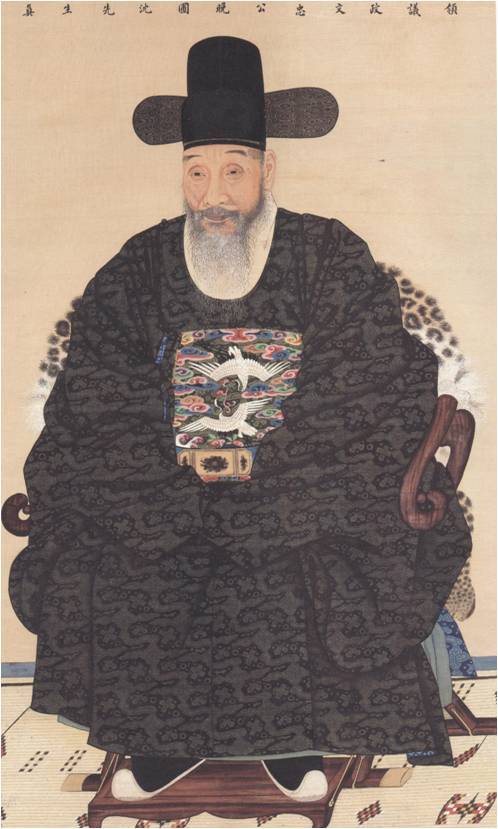Portraits in Korea are much more than simple artworks. Rather, they are signs of respect for ancestors that have been passed down through generations.
Portraits of the Joseon era (1392-1910) are known for their realistic description and details. They are also called jeonsinhwa, a painting that passes down the spirits of ancestors.
Unlike in neighboring countries, painters were devoted to portraying subjects as realistically as possible based on the belief that “if things as small as a strand of hair are drawn differently, then the painting no longer depicts the same person.”

“Portrait of Shim Hwan-ji,” a Korean civil minister in the early 19th century. (Minstry of Culture Sports, and Tourism)
Although they emphasize the importance of reality, Joseon portraits rarely use shading or perspective techniques that are widely used in Western art. Still, they manage to keep a realistic character.
Jeonshinhwa does not simply copy the appearance of a person, but also depicts the subject’s spirit, soul, character and social status in the painting without beautification or exaggeration. It captures the vivid depiction of the facial features, even the wrinkles or blemishes.
The painter uses numerous overlapping brush strokes to detail the nose, eyes, mouth and ears, giving a three-dimensional effect.
The procedure starts with applying oil on hanji, traditional Korean paper made with mulberry bark. The painter makes a rough sketch with charcoal on the oilpaper, and then redraws the lines with ink. The initial coloring is done on the back of the paper, which is called “baechae,” followed by painting on the front.
Then, finally, the sketch is copied onto hemp or thin silk glazed with fish glue, and the coloring procedures are repeated.
Demand for the traditional portrait style has been in rapid decline since the introduction of photography and Western-style painting. Traditional portraits are now regarded as overly posh and impractical, painted to honor deceased people at religious rituals or special occasions.
While studies on traditional portraiture have been conducted, few jeonsinhwa painters remain.
The Ministry of Culture, Sports and Tourism earlier this month said it would step up to preserve and promote the tradition by launching a training program for the next three years to encourage talented and aspiring artists to inherit the spirit.
“It seems that the essence of our traditional portraits has nearly faded. We are seeking young artists who have yet to be influenced by the Western painting style but are good at realistic description,” said Cho Yong-jin, the chief of Korea Face Institution, an agency that is planning to select five trainees every six months until 2016.
For more information about the project, call (02) 752-1767 or (02) 537-8799.
By Suh Hye-rim (sheren6735@heraldcorp.com)





![[From the Scene] Monks, Buddhists hail return of remains of Buddhas](http://res.heraldm.com/phpwas/restmb_idxmake.php?idx=645&simg=/content/image/2024/04/19/20240419050617_0.jpg&u=20240419175937)
